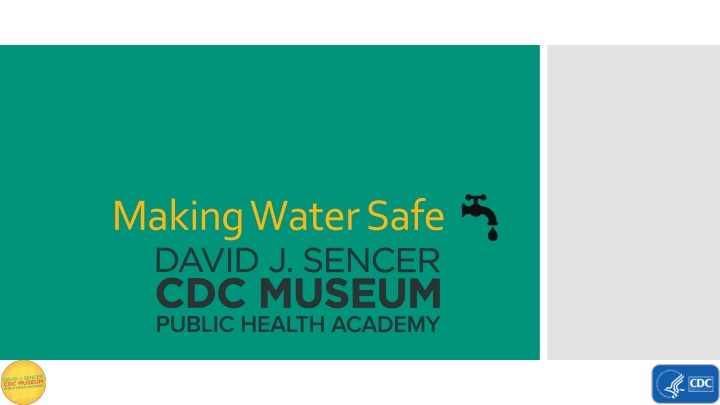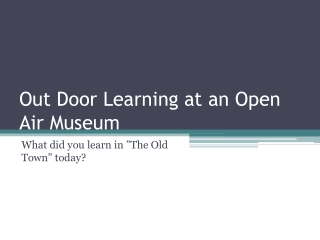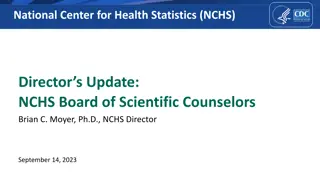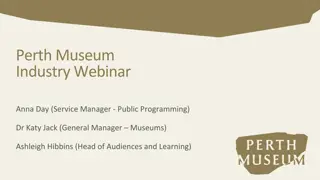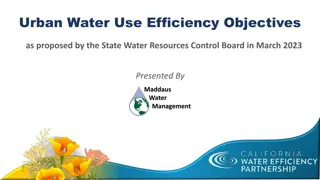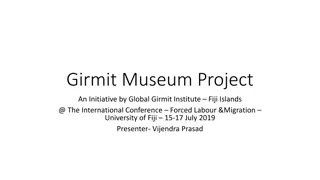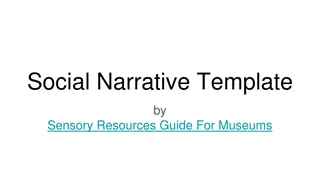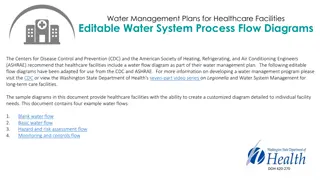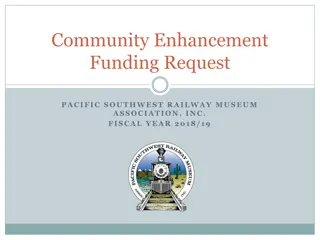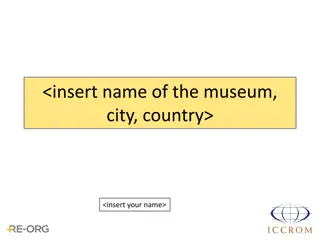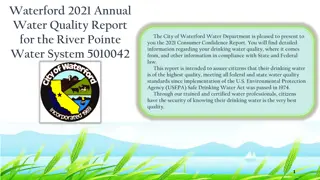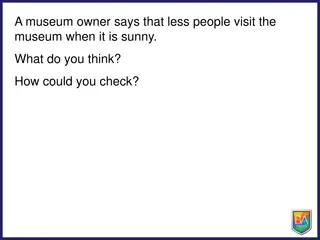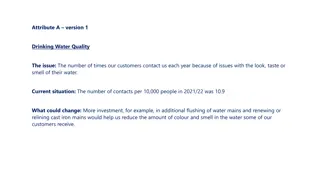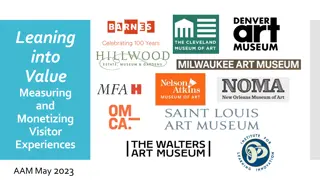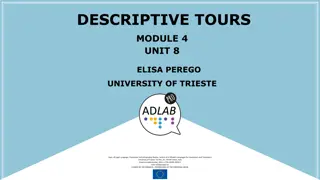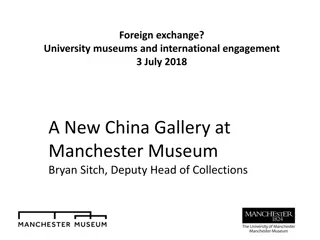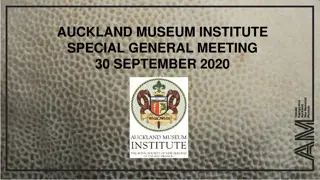Making Water Safe at CDC Museum
People who help collect data for research projects conducted by professional scientists. Understanding drinking water and the importance of clean drinking water. Explore the history and impact of public water systems in the US. Addressing the global issue of lack of access to clean drinking water and sanitation through the WASH program.
Download Presentation

Please find below an Image/Link to download the presentation.
The content on the website is provided AS IS for your information and personal use only. It may not be sold, licensed, or shared on other websites without obtaining consent from the author.If you encounter any issues during the download, it is possible that the publisher has removed the file from their server.
You are allowed to download the files provided on this website for personal or commercial use, subject to the condition that they are used lawfully. All files are the property of their respective owners.
The content on the website is provided AS IS for your information and personal use only. It may not be sold, licensed, or shared on other websites without obtaining consent from the author.
E N D
Presentation Transcript
Making Water Safe David J. Sencer CDC Museum Public Health Academy
people who help collect data for research projects conducted by professional scientists Word Bank exposure the process of making or keeping things free from filth, infection, or other dangers sanitation a system that removes impurities from water or air contagious to leave without protection, shelter, or care citizen scientist able to be passed from one individual to another through contact public health the science of protecting and improving the health of people and their communities filtration system bacteria microscopic living organisms found everywhere; some good, some harmful Global Water, Sanitation, and Hygiene (WASH) program a program that protects communities from harmful water
Drinking Water sources: public water systems, private wells, bottled water Understanding Drinking Water Public water systems remove harmful microorganisms and chemicals
1. What are some sources of drinking water? Think About It 2. Why is clean drinking water important? 3. Why do some communities not have access to clean drinking water?
Public water systems: have existed thousands of years provide water for communities, take away waste Before 1900: U.S. water contaminated by bacteria that cause cholera and typhoid 1908: first efforts to sanitize water in Jersey City, New Jersey Safe Water and CDC
Over 2.5 billion people worldwide do not have access to effective sanitation Over 780 million people do not have access to improved water sources Global Water, Sanitation, and Hygiene (WASH) Program protects communities from contaminated water by promoting behavior change Provides affordable and sustainable solutions Used to be under Safe Water System Safe Water and CDC Global Leading Cause of Death Among Children Under Five
1. Why was it important for cities to sanitize their public water sources? 2. How many people around the world struggle with access to clean water? Think About It 3. How does WASH address global water sanitation issues?
From the Expert https://youtu.be/FjwPwq9UB2s
1. What are the dangers associated with diarrheal diseases? 2. Explain the role communication plays in water safety. Think About It 3. How can your efforts support the efforts of CDC?
Call to Action! 1. Design a safe water practice infographic 2. Engineer a water filter 3. Share your designs Give it a Try Why do you think participation is important?
Define Define the problem Research Do background research Design a Water Filter and Safe Water Practice Infographic Specify Specify requirements Choose and develop solutions Brainstorm Build Build a prototype Test Test and redesign Share Communicate results
1. Design a Safe Water Practices Infographic Give it a Try
2. Engineer a Water Filter - Prepare the water sample - Prepare the containers - Build the prototype Give it a Try
2. Engineer a Water Filter - Test the prototype Give it a Try
3. Share Your Designs - Instagram @CDCmuseum Give it a Try
